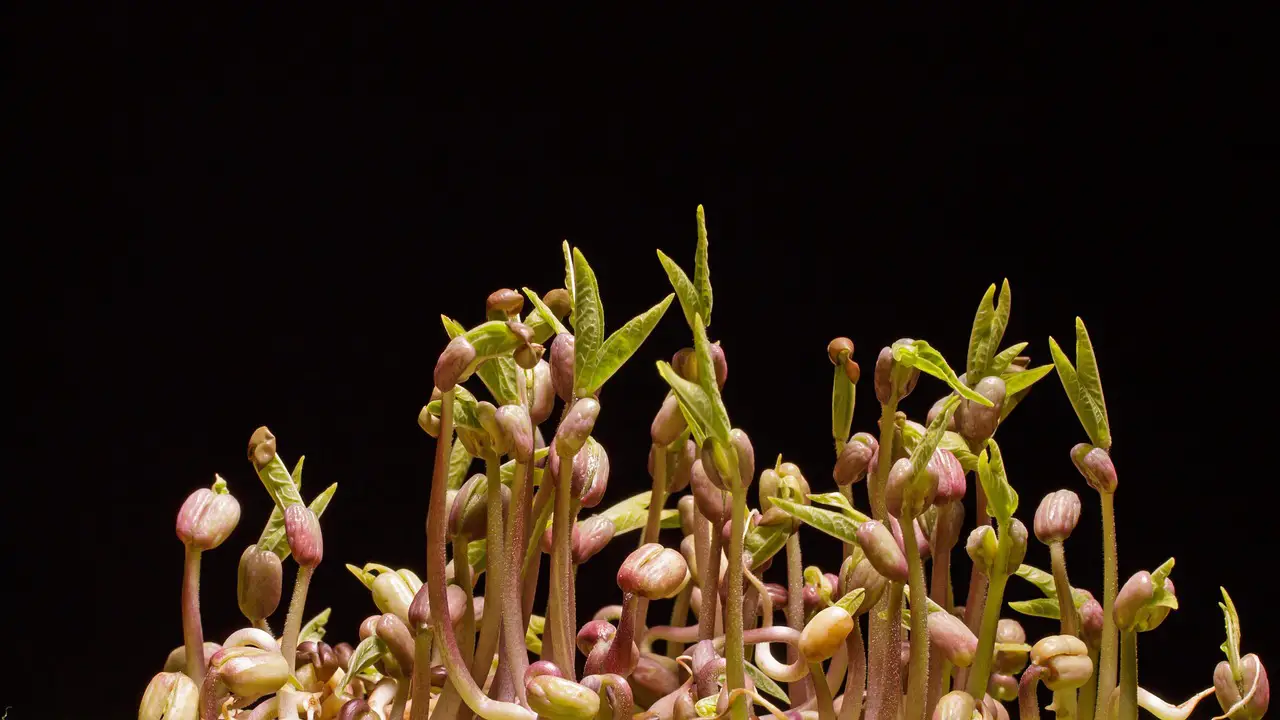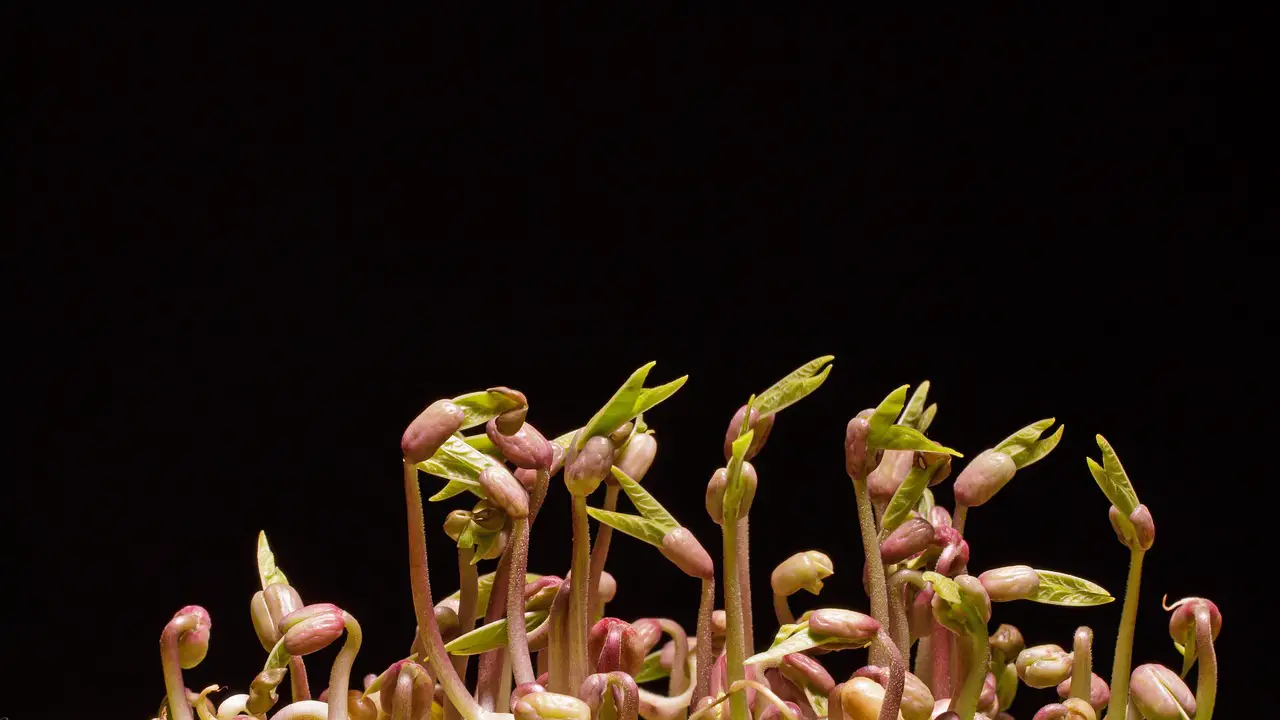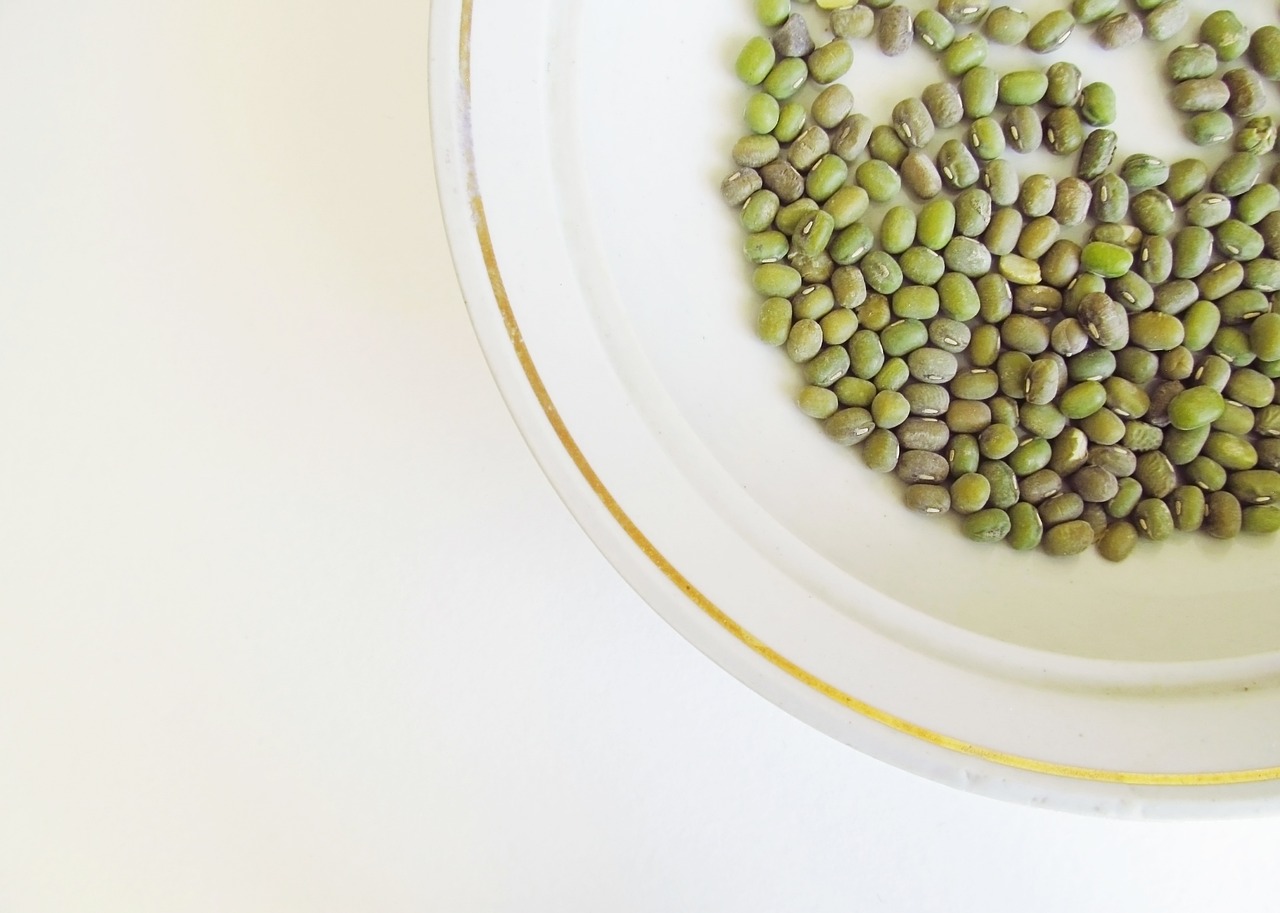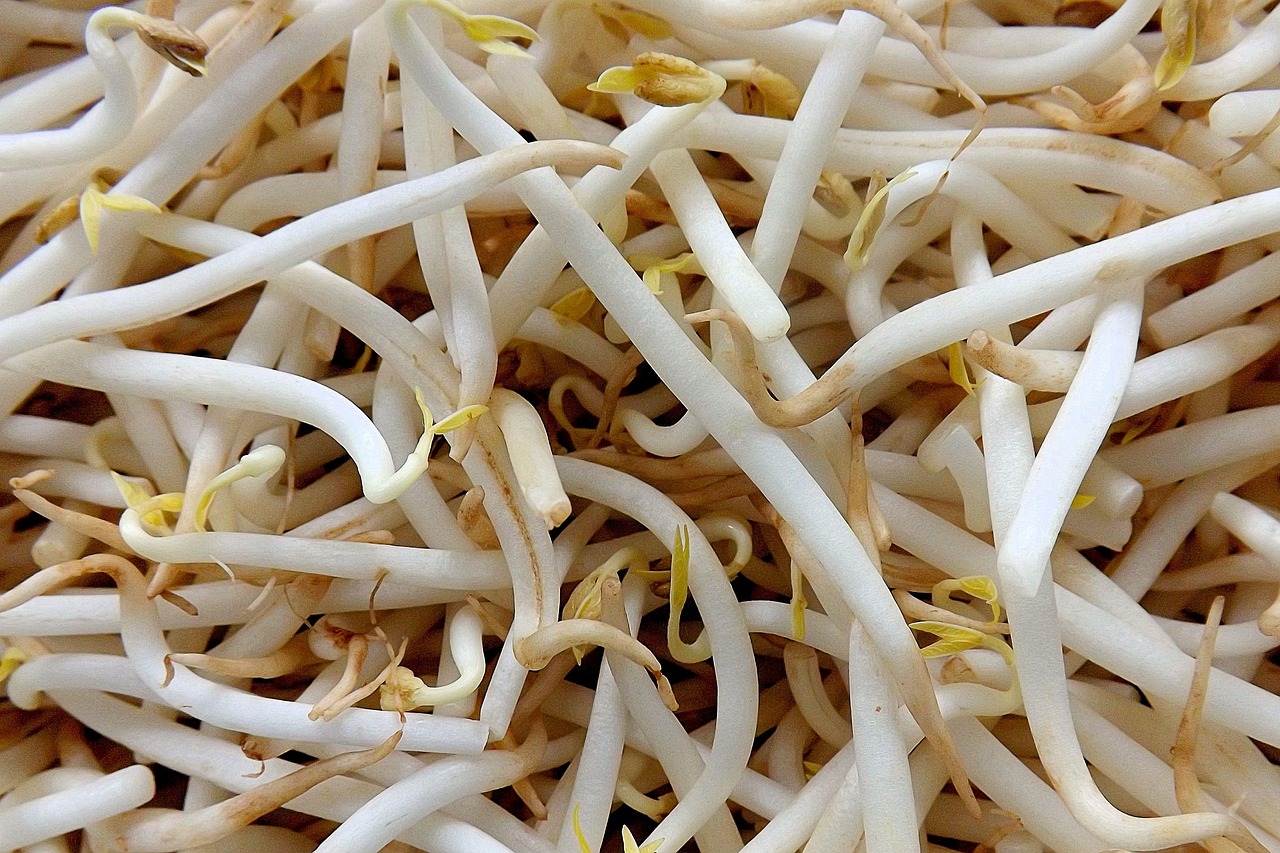Mung beans are versatile and nutritious legumes that can be easily grown at home. They require minimal space and can thrive in various conditions, making them an excellent choice for gardening enthusiasts and beginners alike.
Mung beans (Vigna radiata) are small, green legumes packed with vitamins, minerals, and protein. They are not only popular in Asian cuisine but have also gained recognition for their health benefits. Growing mung beans at home can be a rewarding experience, providing fresh sprouts for salads, sandwiches, and stir-fries. This guide will take you through the essential steps to successfully grow mung beans, from selecting seeds to harvesting your crop.

Mung beans are particularly known for their quick germination and growth. In just a few days, you can see the first sprouts emerging from the soil. They thrive in warm weather, making them ideal for spring and summer planting. Whether you have a garden plot or just a small balcony, mung beans can be grown in containers or directly in the ground.
Benefits of Growing Mung Beans
There are several advantages to growing mung beans at home. Here are some key benefits:
- Nutritional Value: Mung beans are rich in protein, fiber, and essential vitamins and minerals.
- Easy to Grow: Mung beans require minimal care and can grow in various environments.
- Versatile Uses: The beans can be consumed in various forms, such as sprouts, soups, or as a side dish.
- Fast Growth: They typically sprout within 2-3 days and are ready for harvest in about 3-4 weeks.
Understanding the right conditions for growing mung beans is critical for a successful harvest. They prefer warm temperatures ranging from 70°F to 85°F (21°C to 29°C) and need plenty of sunlight. While they can tolerate some shade, full sun exposure is best for optimal growth.
When it comes to soil, mung beans thrive in well-draining soil rich in organic matter. A pH level between 6.0 and 7.5 is ideal. You can improve soil quality by mixing in compost or well-rotted manure before planting. This will provide essential nutrients that support healthy growth.

Growing Mung Beans: Step-by-Step Guide
To successfully grow mung beans at home, follow these steps:
- Select Your Seeds: Choose high-quality mung bean seeds from a reputable source.
- Prepare the Soil: Ensure the soil is well-draining and enriched with compost or organic matter.
- Sow the Seeds: Plant seeds about one inch deep in rows spaced at least six inches apart.
- Watering: Water the seeds gently after planting to keep the soil moist but not soggy.
- Sunlight Exposure: Place your pots or garden beds where they will receive full sunlight for at least six hours a day.
- Monitor Growth: Keep an eye on the plants for pests and diseases while ensuring they have adequate water.
- Harvesting: Mung beans can be harvested when the pods are green and plump, typically around 3-4 weeks after sowing.
In addition to this step-by-step guide, understanding the common pests and diseases that can affect mung bean plants is essential for successful cultivation. Some common issues include aphids, spider mites, and fungal infections. Regular monitoring and maintaining good air circulation can help prevent these problems.
If you plan to grow mung beans indoors or in containers, ensure that your pots have drainage holes to prevent waterlogging. Using a potting mix designed for vegetables will also help provide the nutrients your plants need.

With these guidelines in mind, you are well on your way to successfully growing mung beans at home. This legume not only provides nutritional benefits but also adds a touch of green to your living space.
Watering and Care for Mung Beans
Proper watering and care are crucial for the successful growth of mung beans. While these plants are relatively easy to cultivate, they do have specific needs that must be met. Understanding how much water to provide and the best care practices can significantly influence your crop yield.
Watering Schedule
Mung beans require consistent moisture, especially during their germination phase. However, overwatering can lead to root rot and other issues. Here is a simple watering schedule:

- Germination Phase: Water daily to keep the soil consistently moist.
- Growing Phase: Water every 2-3 days, depending on weather conditions. Check the soil’s moisture level before watering.
- Pre-Harvest Phase: Reduce watering as harvest time approaches to ensure pods mature properly.
Always check the top inch of soil. If it feels dry, it is time to water. When watering, aim for the base of the plant to avoid wetting the leaves, which can promote fungal diseases.
Fertilization Needs
Mung beans are legumes and have the ability to fix nitrogen in the soil through their root nodules. This means they require less nitrogen fertilizer compared to other crops. However, providing some additional nutrients can enhance growth. Consider the following:
- Organic Fertilizers: Use compost or well-rotted manure to enrich the soil before planting.
- Balanced Fertilizers: Apply a balanced NPK (Nitrogen, Phosphorus, Potassium) fertilizer when plants are about 2 weeks old.
- Micronutrients: Ensure that your soil contains micronutrients such as magnesium and iron, which are essential for healthy plant growth.
Pest Management for Mung Beans
Pests can pose a significant threat to your mung bean plants. Identifying and managing these pests early can prevent damage and ensure a healthy harvest. Here are common pests to watch out for:
| Pest | Description | Control Methods |
|---|---|---|
| Aphids | Small, green or black insects that suck sap from plants. | Introduce ladybugs or use insecticidal soap. |
| Spider Mites | Tiny red or green pests that create fine webs on plants. | Increase humidity around plants and apply neem oil. |
| Whiteflies | Small, white insects that feed on the underside of leaves. | Use sticky traps and insecticidal soap. |
| Leafhoppers | Green insects that jump when disturbed; they can transmit diseases. | Use row covers and insecticidal sprays if needed. |
Regularly inspect your plants for signs of infestation. Early detection is key to effective pest control. Maintaining good air circulation and proper spacing between plants can also help deter pests.
Disease Prevention Strategies
Mung beans can be susceptible to various diseases, including fungal infections and bacterial blight. Here are some strategies to prevent disease:
- Crop Rotation: Rotate crops each season to reduce disease buildup in the soil.
- Healthy Seeds: Start with disease-free seeds from reputable sources.
- Spacing and Airflow: Provide adequate spacing between plants to promote airflow and reduce humidity around foliage.
- Watering Practices: Water at the base of the plant in the morning to allow leaves to dry during the day.
Implementing these practices will help maintain a healthy growing environment for your mung beans and minimize the risk of diseases and pests.
Harvesting Mung Beans
Knowing when and how to harvest mung beans is essential for enjoying their full flavor and nutritional benefits. Harvest time depends on whether you are growing them for fresh sprouts or mature seeds.
Harvesting for Sprouts
If you are growing mung beans specifically for sprouts, you can begin harvesting them just a few days after germination. Here’s how:
- Timing: Harvest sprouts when they are about 1-2 inches long, usually within 4-7 days.
- Cut Carefully: Use clean scissors to cut the sprouts above the soil level.
- Rinse Thoroughly: Rinse harvested sprouts under cool water before using them in dishes.
Harvesting Mature Beans
If you intend to harvest mature mung beans for cooking or storage, follow these guidelines:
- Timing: Wait until the pods turn brown and dry out on the plant.
- Cutting Plants: Use scissors or garden shears to cut the entire plant at its base.
- Dried Pods: Place the cut plants in a well-ventilated area to allow further drying if necessary.
This careful approach ensures you get the best flavor from your mung beans, whether you are enjoying them as fresh sprouts or dried seeds. Proper harvesting techniques will also enhance their storage life, allowing you to enjoy your homegrown produce longer.
Storing and Using Mung Beans
After harvesting your mung beans, proper storage is essential to maintain their freshness and flavor. Understanding how to store both sprouted and mature mung beans can ensure that you enjoy their nutritional benefits for an extended period.
Storing Sprouted Mung Beans
Freshly harvested mung bean sprouts are delicate and require specific storage conditions. Here are some tips for storing sprouted mung beans:
- Refrigeration: Place the sprouts in a breathable container, such as a mesh bag or a container with holes, to prevent moisture buildup. Store them in the refrigerator.
- Use Quickly: For best flavor and texture, consume the sprouts within 3-5 days after harvesting.
- Rinse Before Use: Rinse the sprouts under cool water just before using them in your dishes to refresh their crispness.
Storing Dried Mung Beans
Mature mung beans can be stored for long periods if handled properly. Follow these guidelines:
- Cool, Dark Place: Store dried mung beans in an airtight container in a cool, dark place. A pantry or cupboard works well.
- Avoid Moisture: Keep them away from moisture and humidity to prevent mold growth. It is recommended to use moisture-absorbing packets in the storage container.
- Check Regularly: Periodically check on your stored beans for any signs of spoilage or pests.
Culinary Uses of Mung Beans
Mung beans are incredibly versatile and can be used in various culinary applications. Here are some popular ways to incorporate them into your meals:
Mung Bean Sprouts in Dishes
Mung bean sprouts add a crunchy texture and nutritional boost to dishes. Here are some common uses:
- Salads: Toss fresh mung bean sprouts into salads for added crunch and nutrition.
- Stir-Fries: Add them to stir-fries for a delightful crunch and fresh flavor.
- Soups: Use mung bean sprouts as a garnish in soups for a fresh touch.
Mature Mung Beans in Cooking
Mature mung beans can be used in many recipes, from savory dishes to sweet treats. Consider these options:
- Soups and Stews: Cook mung beans in soups or stews for added protein and fiber.
- Pancakes: Blend cooked mung beans into pancake batter for nutritious breakfast options.
- Desserts: Use mung bean paste in Asian desserts such as mooncakes or sweet dumplings.
Nutritional Benefits of Mung Beans
Mung beans are not only delicious but also packed with nutrients. Here is a breakdown of their key nutritional benefits:
| Nutrient | Amount per 100g (cooked) |
|---|---|
| Calories | 105 |
| Protein | 7g |
| Fiber | 7g |
| Fat | 0.4g |
| Carbohydrates | 19g |
| Iron | 1.4mg |
| Folate | 268µg |
Mung beans are an excellent source of plant-based protein, making them a great addition to vegetarian and vegan diets. Their high fiber content aids digestion and promotes a healthy gut. Additionally, they are rich in vitamins and minerals, including folate, magnesium, and potassium, which contribute to overall health.
Cultural Significance of Mung Beans
Mung beans have significant cultural importance in various cuisines around the world. They are especially prominent in Asian cooking. Here are some cultural highlights:
- Asian Cuisine: Mung beans are widely used in Chinese, Indian, and Thai dishes. They are often found in soups, curries, and desserts.
- Sustainability: Due to their nitrogen-fixing ability, mung beans are often used in crop rotation to improve soil health, promoting sustainable farming practices.
- Cultural Celebrations: In many cultures, mung beans are associated with prosperity and health, often featured in celebratory dishes during festivals.
The rich history and cultural significance of mung beans make them not only a nutritious choice but also a meaningful one in many households around the world.
Additional Tips for Successful Mung Bean Cultivation
To ensure a bountiful harvest of mung beans, consider these additional tips that can enhance your growing experience:
- Companion Planting: Mung beans can benefit from being planted alongside certain crops like corn and radishes. These plants can help deter pests and improve growth.
- Mulching: Adding a layer of mulch around your mung bean plants can help retain soil moisture and suppress weeds. This practice can also improve soil health over time.
- Seed Soaking: Soaking seeds in water for a few hours before planting can speed up germination. This practice helps the seeds absorb moisture and initiates the germination process.
- Regular Weeding: Keep the area around your mung beans free from weeds, which can compete for nutrients and water. Regular weeding will promote healthier growth.
By implementing these strategies, you can create an optimal growing environment for your mung beans, enhancing both yield and quality.
Exploring Mung Bean Varieties
Mung beans come in various varieties, each with its unique characteristics. Understanding these differences can help you choose the best type for your growing conditions and culinary preferences:
| Variety | Description | Best Use |
|---|---|---|
| Green Mung Beans | The most common type, known for its light green color and small size. | Sprouting, soups, and salads. |
| Black Mung Beans | A variety with a dark outer shell, often used in traditional recipes. | Curries and desserts. |
| Golden Mung Beans | A milder-flavored variety used primarily in Asian sweets. | Desserts and pastries. |
Selecting the right variety for your specific needs can enhance your culinary experience and provide greater satisfaction from your home garden.
Environmental Considerations
As you grow mung beans, it is essential to keep environmental considerations in mind. Mung beans are considered an eco-friendly crop for several reasons:
- Soil Health: As nitrogen-fixing plants, mung beans improve soil quality, reducing the need for chemical fertilizers.
- Water Conservation: They require less water than many traditional crops, making them a sustainable choice in regions facing water scarcity.
- Pest Resistance: Growing mung beans can help with pest management through crop diversity, reducing reliance on pesticides.
By choosing to grow mung beans, you not only provide nutritious food for yourself but also contribute positively to the environment.
Final Thoughts
Mung beans are a fantastic choice for home gardeners, offering numerous benefits ranging from nutritional value to ease of cultivation. Whether you are growing them for fresh sprouts or mature beans, following proper care guidelines ensures a successful harvest. With their rich cultural significance and versatility in cooking, mung beans can enhance both your meals and your gardening experience.
As you embark on your journey of growing mung beans at home, remember that patience and observation are key. Each step, from planting to harvesting, provides valuable lessons in gardening and sustainability. Enjoy the process, experiment with different recipes, and relish the satisfaction of harvesting your own nutritious food.
By incorporating mung beans into your garden and diet, you embrace a healthier lifestyle while contributing to sustainable agricultural practices. Happy gardening!
